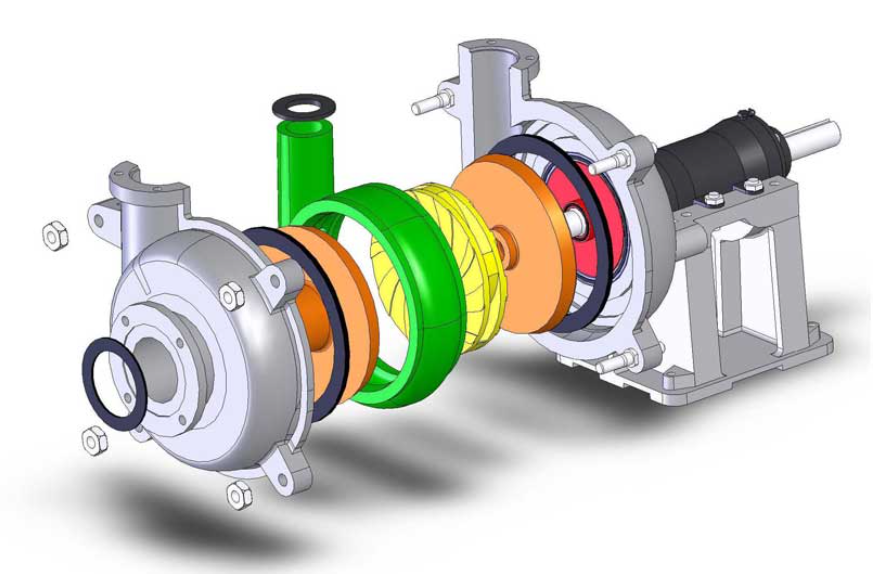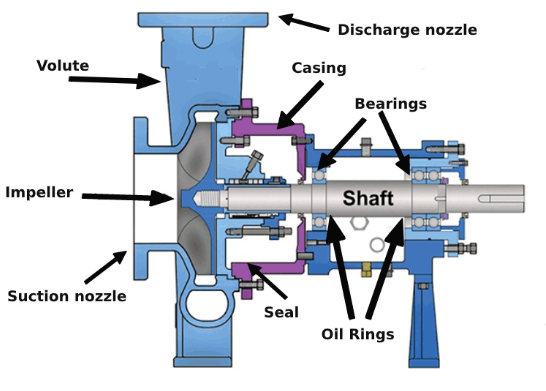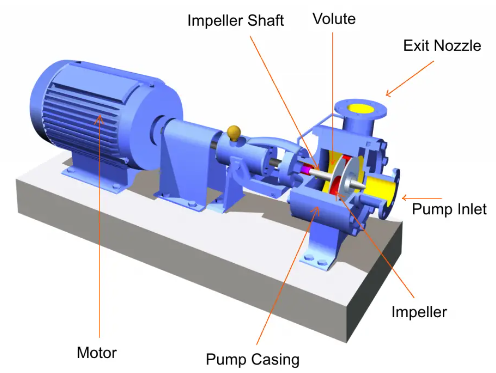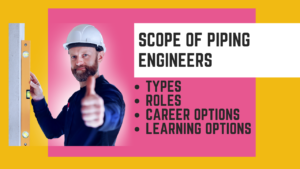

1. The Key Component of a Centrifugal Pump
What is the key rotating component in a centrifugal pump responsible for creating centrifugal force?
Explanation: The key rotating component in a centrifugal pump responsible for creating centrifugal force is the impeller.
2. Fluid Entry in a Centrifugal Pump
Where does the liquid enter the centrifugal pump before reaching the impeller?
Explanation: Liquid enters the centrifugal pump through the inlet before reaching the impeller.
3. Velocity to Pressure Conversion
How is the fluid’s velocity converted into pressure in a centrifugal pump?
Explanation: The volute-shaped casing surrounding the impeller converts the fluid’s velocity into pressure in a centrifugal pump.
4. Multi-Stage Centrifugal Pumps
How do multi-stage centrifugal pumps achieve higher pressures compared to single-stage pumps?
Explanation: Multi-stage centrifugal pumps achieve higher pressures by utilizing multiple impellers arranged in series.
5. The Spinning Wheel Analogy
What does the spinning wheel analogy aim to illustrate regarding the centrifugal pump’s operation?
Explanation: The spinning wheel analogy illustrates how centrifugal force pushes fluid outwards, similar to the impeller’s action in a centrifugal pump.
6. Mechanics of Centrifugal Pumps
What knowledge does delving into the working principle of centrifugal pumps provide?
Explanation: Delving into the working principle of centrifugal pumps provides insights into fluid dynamics and helps optimize pump operation.
7. Pump Optimization and Maintenance
How does understanding centrifugal pump working principles empower engineers?
Explanation: Understanding centrifugal pump working principles empowers engineers to optimize pump operation, troubleshoot problems, and ensure long-lasting performance through proper maintenance.
Don’t Miss the Relevant Topics on Centrifugal Pumps
| Topics on Centrifugal Pumps | Topics on Centrifugal Pumps |
| Working Principle of Centrifugal Pumps | Centrifugal Pump Mechanical Seals |
| Centrifugal Pump Bearings | Centrifugal Pump Shaft |
| Types of Centrifugal Pumps | Centrifugal Pump Impellers |
| Centrifugal Pump Casing |
Short Article on Working Principle of Centrifugal Pumps

Unveiling the Secrets of Spin: The Working Principle of Centrifugal Pumps
Centrifugal pumps are the silent workhorses of countless industries, responsible for driving the flow of liquids in diverse applications. Understanding their working principle unlocks the secrets behind their efficient and reliable operation.
The Heart of the Process: The Impeller
The heart of a centrifugal pump lies in its impeller, a rotating component equipped with vanes. As the motor drives the impeller, it spins at high velocity, creating a powerful centrifugal force.
From Motion to Energy Transfer:
- Fluid Entry: Liquid enters the pump through the inlet and travels towards the impeller eye, the central hub where the vanes begin.
- Centrifugal Force: The rotating impeller vanes propel the fluid outwards, imparting kinetic energy and converting it into pressure.
- Velocity to Pressure: The volute-shaped casing surrounding the impeller further converts the fluid’s velocity into pressure, maximizing the pump’s output.
- Enhanced Flow: With increased pressure and velocity, the fluid exits the pump through the outlet, ready to be transported to its destination.
Multi-Stage Boost:
Multi-stage centrifugal pumps take this principle a step further. They utilize multiple impellers arranged in series, each adding its own boost to the pressure of the fluid. This allows them to achieve significantly higher pressures compared to single-stage pumps.
Analogy: The Spinning Wheel
Imagine holding a bucket of water and spinning it rapidly. The centrifugal force pushes the water outwards towards the edges of the bucket, similar to how the impeller vanes propel the fluid in a centrifugal pump. This simple analogy helps visualize the core principle behind the pump’s operation.
Understanding the Mechanics:
By delving into the working principle of centrifugal pumps, we gain valuable insights into their functionality and capabilities. This knowledge empowers us to:
- Choose the right pump for specific applications based on flow rate and pressure requirements.
- Optimize pump operation for efficiency and performance.
- Troubleshoot potential problems and maintain the pump for long-lasting operation.
Conclusion:
Centrifugal pumps are powerful tools that rely on the simple yet effective principle of centrifugal force. By understanding how they work, we can appreciate their ingenuity and ensure they continue to serve as essential components in diverse industrial processes.
Table of Contents
Don’t miss the Course on Effective Isometrics Management: Check Now
Enrollment Link
Recommended courses (Published on EPCLand)
- Complete Course on Piping Engineering
- Basics of Piping Engineering
- Piping Layout Engineering
- Piping Material Engineering
- Piping Stress Analysis
- Material Requisitions
- Piping Material Specifications
- Valve Material Specifications
- Plant Design & Layouts-OISD 118
- Isometric Management
Library of Technical Articles
Don’t miss out the collection of 15+ articles on following topics:
- Basics of Oil and Gas Industry
- Valves
- Testing
- Tank
- Piping Bulk Items
- Pipe
- Metallurgy
- Piping Materials
- Layout
- Instrumentation
- Heat Exchanger
- Type of Contracts
- Codes and Standards
- ASTM Standards
- Articles on Piping Specialty Items
Video details of Complete Course on Piping Engineering
Why Enroll in the EPCLand
Proven Track Record– PTR
Activities & Achievements before launching EPCLand
- Published more than 50+ short courses
- 3000+ Enrolments
- More than 3,500,00 Minutes of watch hours in the last 2 years
- 4000+ Students in 100+ Countries
- Rating of 4+ out of 5
- 1000+ YouTube Videos
- 8K+ Subscribers
What Students will Learn
- Codes & Standards of the Energy Sector
- Piping Material Engineering
- Piping Layout Engineering
- Stress Analysis
Interesting facts
- All the published courses have been developed by Industry Experts with more than 2 decades of experience
- Content is based on Practical experience and real-time problems.
- Content is designed and organized in such a manner that it can be easily grabbed.
- Complete website, Blogs and Quiz sections are Planned, Designed and published by myself (About me: Atul Singla)
- Complete flexibility of Time & Location, Students can access the content from anywhere & anytime
- Moreover, once enrolled, the content can be access as many times as you want, which helps in understand the fundamentals in a better way.
Conclusion
In conclusion, our courses are meticulously crafted by industry experts with over two decades of hands-on experience. The content is rooted in practical knowledge, addressing real-time problems. The material is thoughtfully designed and organized for easy comprehension. Every aspect, from the website to blogs and quizzes, has been planned, designed, and executed by Atul Singla, ensuring a comprehensive and seamless learning experience. With the flexibility of accessing the content at any time and from any location, students have the freedom to learn on their terms. Furthermore, enrollment grants unlimited access, allowing learners to revisit the material as often as needed, fostering a deep understanding of the fundamentals.



